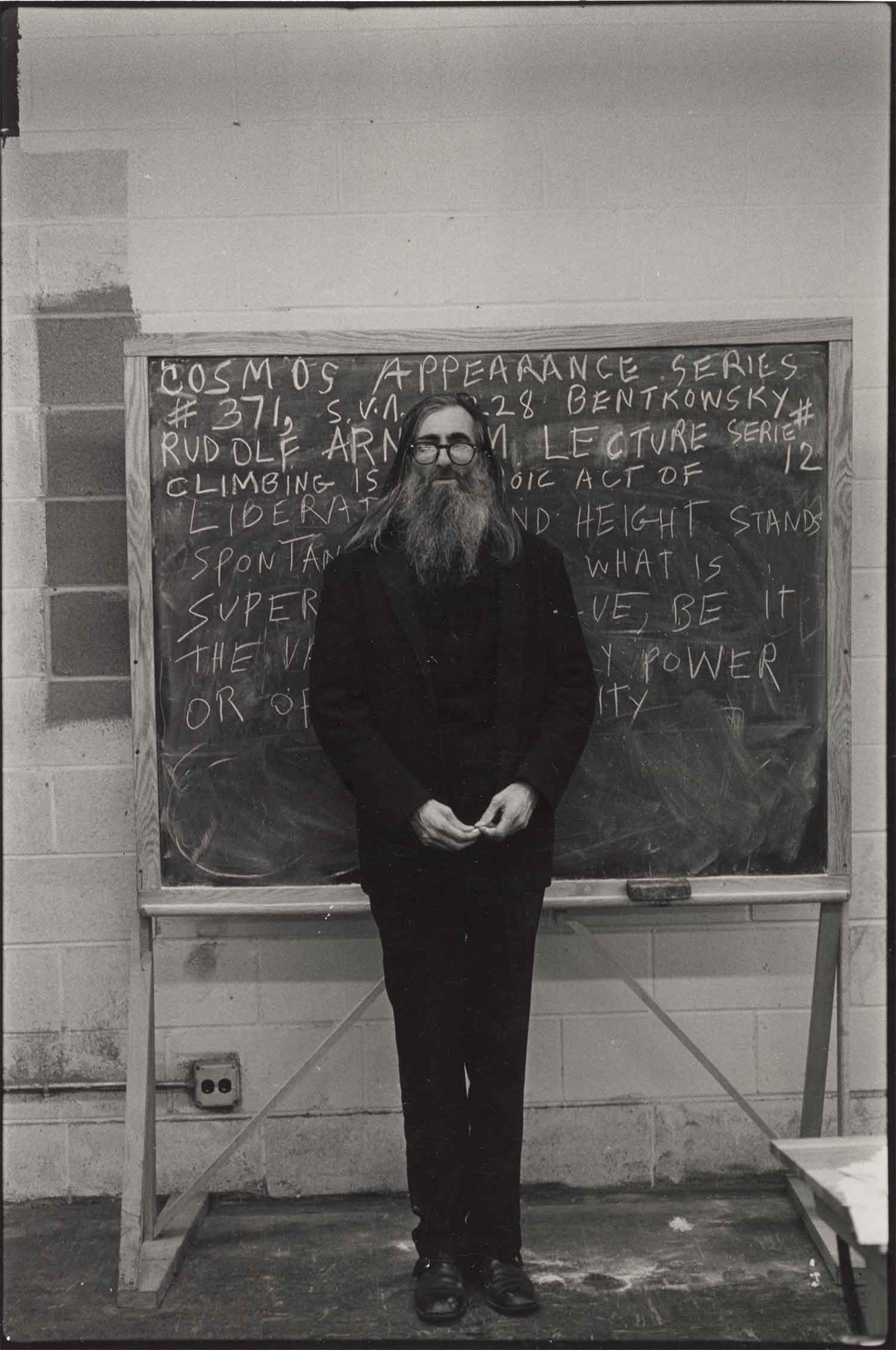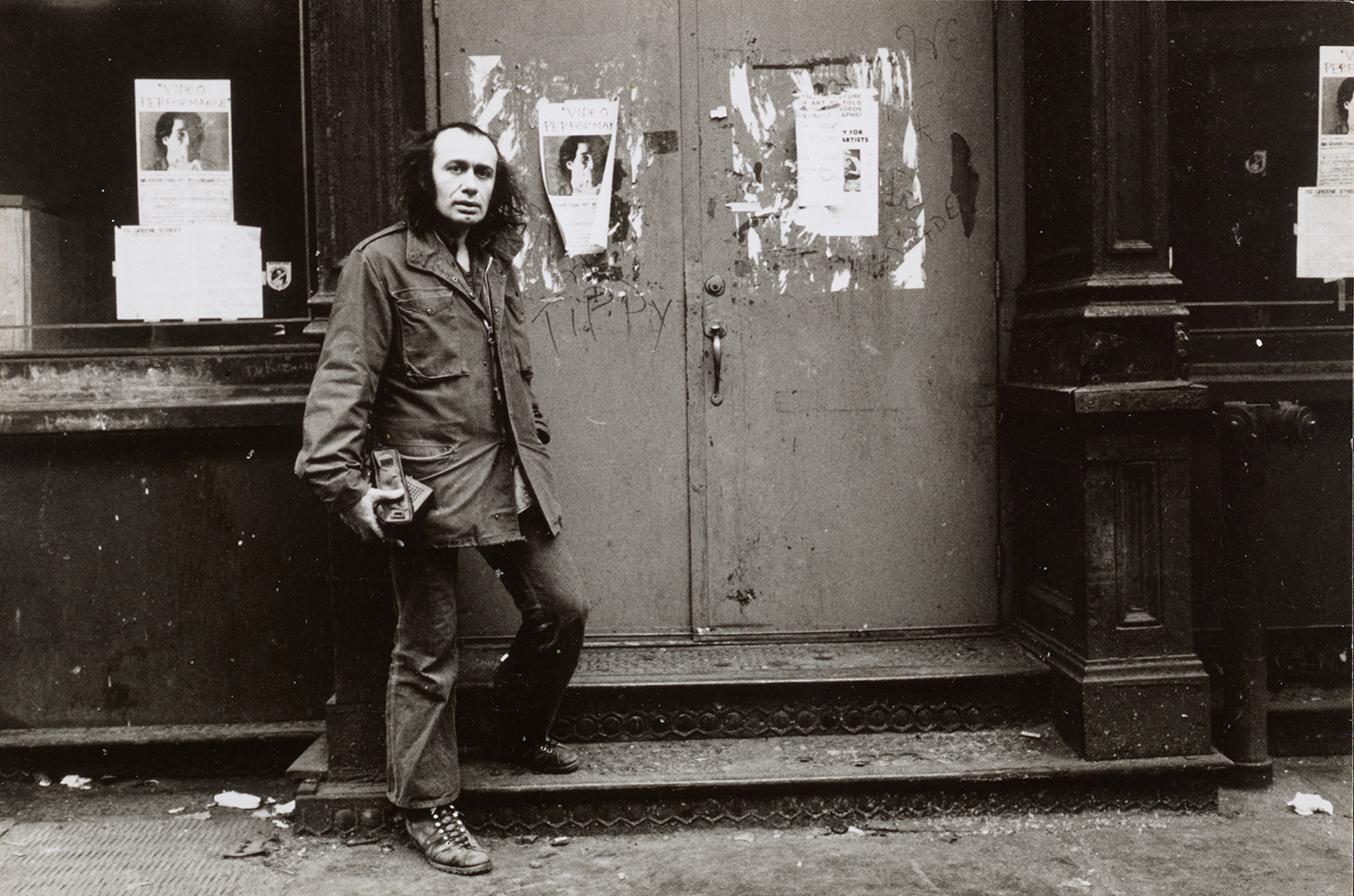I was friends with Cosmos for about 2 years - '71-72. I guess I was a girlfriend of his. I would see him every week on my days off. I was living in central NJ at the time. We met when he was photographing a premier of Lenny on Broadway. I went to see it alone and left with him. I had been trying to find him over the years, lost his phone number, but then when I saw it on the back of one of his photos, I remembered it right away. Funny, the brain is. I lost touch with him, when I started college and needed to work and go to school full time. He took so very many photos of me I always remember him wanting me in a gray VASSAR t shirt with navy lettering (?) and nothing else and he would stand me by those huge windows in his home/studio. I never knew his real name and thought cosmos savage was his only name. I remember how we would take somewhere between 30-60 minutes to walk one street in the city as he kept seeing things to photograph. He always wore 3-4 cameras dangling around his neck. Where are his collections of photos? Can they be viewed. I would love to see just one of myself from back then. I am so sorry, we never got to reconnect as I thought of him frequestly over the years. When my home health aide found the photo of him standing in front of the blackboard and emailed it to me, I must have cried for an hour. It is printed out and above my head now, forever.
Acquisitions: Cosmos Andrew Sarchiapone Papers

This entry is part of an ongoing series highlighting new acquisitions. The Archives of American Art collects primary source materials—original letters, writings, preliminary sketches, scrapbooks, photographs, financial records and the like—that have significant research value for the study of art in the United States. The following essay was originally published in the spring 2016 issue (vol. 55, no. 1) of the Archives of American Art Journal. More information about the Journal can be found at http://www.journals.uchicago.edu/toc/aaa/current.

A bounty of 1970s avant-garde photographs has come to the Archives as part of the papers of Cosmos Andrew Sarchiapone (1931–2011), generally known as “Cosmos.” A composer and Conceptual photographer, Cosmos primarily photographed the intersecting worlds of music, art, theater, and film in 1970s New York. While some of his images of art installations appeared in Avalanche magazine, and his shots of celebrities appeared in New York magazine, the vast majority of his thousands of images were never published. Cosmos stored them in boxes in his studio at Westbeth Artists Community, where he lived for forty-one years. A few years before his death, curator Catherine Morris, researching an exhibition on Gordon Matta-Clark’s experimental restaurant and performance space, FOOD, noticed that a number of the documentary photographs about the site were signed with the name “Cosmos.” Morris tracked down the artist and over time became his friend. When Cosmos died, he left his archive to her, and Morris facilitated its donation to the Archives.
In this collection, researchers will find hundreds of images of artworks from 112 Greene Street in SoHo, the first sizeable downtown independent art space in New York. Among the more than 3,000 almost entirely unpublished pictures of the space are views of many of its installations and performances between 1970 and 1974. One well-documented event in the collection is Prisoner’s Dilemma, by Richard Serra with Robert Bell, an enactment of a game theory exercise in which prisoners isolated from one another are promised freedom in exchange for revealing the names of their co-conspirators. The archive contains numerous images of “prisoners,” including art dealer Leo Castelli and other participants.
The Cosmos Papers also include rare photo-documentation of performances such as Willoughby Sharp’s HELP!, consisting of the artist on LSD trying to come to terms with a breakup from his girlfriend; Dennis Oppenheim’s Recall, which consists of a video monitor showing a close-up of the artist’s lips as he talks about his memories of turpentine; and Matta-Clark’s Walls Paper and Bronx Floors and Dumpster Duplex. While a few individual photographs of these works have appeared in the two books on 112 Greene Street, the Cosmos collection includes entire series of images, filling one to three contact sheets on each project, providing more complete documentation.

In addition to documenting works of art, Cosmos photographed the key personalities of the 1970s New York underground. In one expansive series, he photographed artist Joseph Beuys daily for one month in 1974. The archive holds more than 400 images of Beuys at 112 Greene Street, at the New School of Social Research, and also relaxing in his hotel room in New York City; among these images is the iconic photo of the artist in a fur-collared coat that appeared on his Ronald Feldman Gallery announcement. Photographs of Hannah Wilke, Charlotte Moorman, Vito Acconci, Chris Burden, and Philip Glass show these provocative figures walking on the street, talking on the telephone, and socializing at parties.
Researchers will witness these artists and art events in the broader context of the pre-gentrified New York that the artist’s papers reveal. They will discover seedy movie theater box offices and marquees, the Velvet Underground of Andy Warhol and his circle, the Reverend Sun Myung Moon convention, the Jesus Joy Jubilee at Carnegie Hall, the Beat Generation poets’ reunion, and private parties attended by Hollywood actors and directors. Joan Crawford, Larry Rivers, Robert Rauschenberg, John Cage, John Lennon, Jack Nicholson, Francis Ford Coppola, Robert Frank, Allen Ginsberg, Jacqueline Kennedy Onassis, and many others appear in more than 30,000 prints, negatives, and contact sheets.
Cosmos worked at Push Pin Studios, the design firm founded by Milton Glaser and Seymour Chwast, Cosmos’s mentors and supporters. The Archives collection contains more than 100 posters from the 1970s, including a number of Glaser’s, and hundreds of exhibition announcements, theater programs, and playbills, offering a chronicle of the downtown art world in the graphic design specific to that period.
Cosmos’s intriguing Conceptual artworks, included in this gift to the Archives, often incorporate aspects of his work as a photojournalist. We see this in Reciprocal, a project in which Cosmos photographed figures in the art world whom he admired—John Cage, Meyer Schapiro, Robert Scull, and others—and then asked each to photograph him. A mock-up of this never-published artist book presents each pair of photographs on facing pages. An admirer of American photographer Diane Arbus, Cosmos generated two serial works made from fragments of her discarded photographs, mounting and sequencing them in a way that both recalls and transforms the artist’s iconic images.
Cosmos created numerous scores for plays and dance performances, and these are included in the archive as both recordings and written compositions. Researchers may view many drafts of his opera Vox Humana, which concerns three heroines of history: Antigone, Joan of Arc, and Patty Hearst. There is also the source material Cosmos collected in the course of writing this opera, such as issues of the National Enquirer detailing the Hearst kidnapping. Indeed, Cosmos’s collections—of vintage postcards, books on how to draw nudes, Hollywood movie stills—exemplify the vernacular source material common to many Conceptual artists of the 1970s, while also portraying Cosmos’s unique, if not eccentric, preoccupations. Users of his extraordinary collection at the Archives will encounter it on many levels: as documentation and specimen, as an autobiography of an artist, and as a portrait of an artistic era.
Annette Leddy is the New York collector for the Archives of American Art.
Comments
Get Involved
Internship, fellowship, and volunteer opportunities provide students and lifelong learners with the ability to contribute to the study and preservation of visual arts records in America.
 Archives of American Art in the Smithsonian Transcription Center
Archives of American Art in the Smithsonian Transcription Center

You can help make digitized historical documents more findable and useful by transcribing their text.
Visit the Archives of American Art project page in the Smithsonian Transcription Center now.
Terra Foundation Center for Digital Collections
A virtual repository of a substantial cross-section of the Archives' most significant collections.

Add new comment